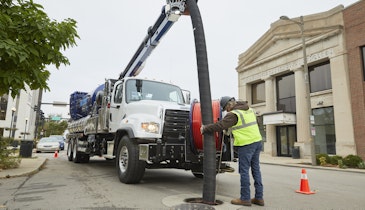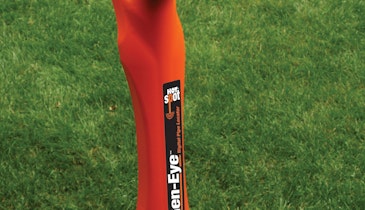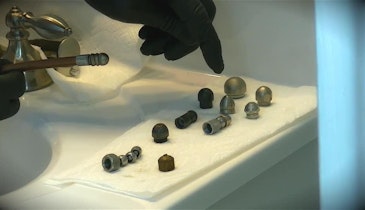Interested in Business?
Get Business articles, news and videos right in your inbox! Sign up now.
Business + Get AlertsWhen developing a project budget, there is no better information than historical information.
“If your company has been around awhile, chances are you’ve done a similar project in the past,” says Gil Gilbert, fleet director of the pipeline division for Henkels & McCoy in Blue Bell, Pennsylvania. “Then you can go back and look at that estimate and compare it to the actuals once the project was completed. In the pipeline and civil construction businesses, you can break those costs down by the mile or foot or however you choose.”
That historical data is a great starting point. Gilbert says there are also countless resources available to help companies get a feel for standard industry benchmarks with respect to things like material costs.
“It’s known data, and it’s pretty reliable,” Gilbert says.
Still, developing a truly accurate project budget requires some additional finesse. For instance, consideration must be given to unique project and job site variables such as environmental conditions, regulations and labor proficiency.
“The labor situation is getting really challenging, especially if you’re a union company,” Gilbert says. “In the pipeline world, the union halls are empty; anybody who is any good is already working. So we have an environment where there are more ‘green’ operators and laborers than usual.”
Project managers need to take that into consideration when projecting labor costs. In addition to the increased likelihood of inefficiencies and mistakes, the presence of inexperienced labor can result in higher equipment costs due to damage or maintenance neglect.
“These variable costs can change exponentially in a single week,” Gilbert says.
Keys to Proper Equipment Cost Allocation
First, to properly allocate equipment costs to a project, budgeters need to understand a given piece of equipment’s ownership costs. This includes proper depreciation over the useful life of the machine, taxes, interest and insurance. These annual costs should be added up over the course of a year and averaged by the month, week and even the hour.
Second, budgeters need to factor in equipment operating costs. This includes expenses like fuel, oil, filters, lube, tires, parts, maintenance and repairs. Again, these costs should be added up and averaged by the month, week and hour.
It’s important to recognize that as a machine ages, operating costs typically skyrocket. This is simply due to the fact that maintenance and repair needs escalate as a machine racks up hours. Gilbert has created a spreadsheet that helps him forecast both ownership and operating costs by the year and hour over the useful life of a machine. Tools like this help budgeters quickly and accurately allocate equipment costs to an individual project.
The third step to equipment cost allocation is where it gets tricky for many companies. This is where a variety of job site variables — including labor proficiency — must be taken into consideration. Gilbert has created what he calls a damage rate estimator. He scores 10 different job site variables on a scale of 1 to 10, with 10 being the highest level of risk:
- Environmental conditions (i.e., slope or grade)
- Fixed hazard or working area (i.e., material being handled)
- Weather conditions
- Operator experience and ability
- Conscientious management, employee training and oversight
- Maintenance (proactive vs. reactive)
- Congestion (buildings, trees, rocks and other fixed objects)
- Ground-engagement tools (teeth, edges and hard facing)
- Visibility (obstacles and light conditions)
- Site security to thwart vandalism and theft.
After scoring each variable, Gilbert tallies them up to arrive at a composite score that measures total job site risk. A composite score of 0 to 20 equals a 10% risk, 21 to 40 equals 20%, and 41 to 60 equals 30%. This helps Gilbert recommend how to allocate equipment costs to a given project.
For example, say an excavator’s baseline ownership and operating cost is $10,000 per month. If that excavator scored a 50 on the damage rate estimator for an upcoming project, that warrants a 30% risk assessment. The budgeter should actually allocate $13,000 a month for the use of this excavator.
“This helps ensure you aren’t slapped with a huge, unexpected repair bill at the end of the project,” Gilbert says. “This is especially important if you are renting equipment, because you have to return the equipment in the same condition as you first rented it.”
Accurate Budgeting Requires Brutal Honesty
Gilbert says that proper cost allocation requires key stakeholders in the budgeting process to be honest with themselves. Sometimes an estimator or company owner really wants to win a bid. They might feel compelled to hold back on certain cost allocation for fear of driving their bid up too high.
“That’s OK when company executives make that decision,” Gilbert says. “At least the decision is being made strategically with no surprises. It’s my job as fleet director to make sure there are no surprises — at least where equipment costing is concerned.”
At Henkels & McCoy, Gilbert has several opportunities to weigh in as the project budgeting process unfolds. He immediately begins working with estimators to start assigning equipment to the project.
“I like to challenge whether or not we really need X machines on a job or if we could get by with a couple fewer,” Gilbert says. “I also like to look for ways to utilize technology such as telematics to improve utilization and productivity.”
Once the first draft of the budget is put together, Gilbert and several other company leaders go through it again to begin refining. This is where he likes to apply his damage rate estimates. The goal is to create a bid that is both realistic and competitive.
“Fleet management is not a glorious job,” Gilbert says. “Everyone looks at fleet management as a cost center, but I like to say we are margin makers. Most companies want to bid a job with a 15% to 20% margin. If we can help add a few margin points back by cutting equipment costs by 10% — through best practices and increased productivity — that’s a good thing. But it starts with accurate equipment costing that takes all variables into consideration.”
About the Author
AEM is the North American-based international trade group representing off-road equipment manufacturers and suppliers, with more than 950 companies and more than 200 product lines in the agriculture and construction-related sectors worldwide. AEM has an ownership stake in and manages several world-class exhibitions, including CONEXPO-CON/AGG.






